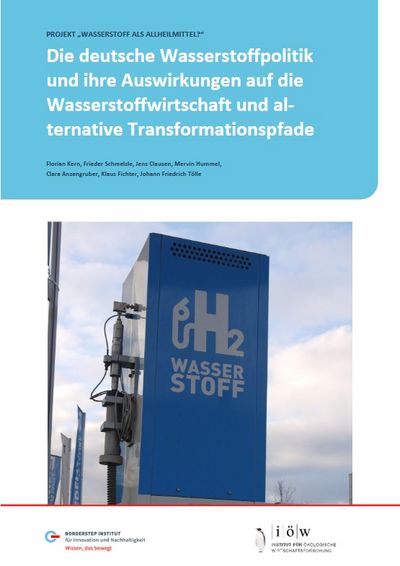German hydrogen policies and their effects on the hydrogen economy and alternative paths of transformation
Hydrogen plays an increasingly important role in German climate protection and energy policy. However, high expectations and technology optimism often fail to recognise that hydrogen is expected to be a scarce commodity in the medium term. In addition, politicians, business, civil society and researchers sometimes disagree on how 'green' it should be produced and whether certain areas of application should be prioritised in view of its scarcity. What policy framework is needed to avoid bad investments and to develop the German hydrogen economy and infrastructure in an efficient and climate-friendly way?
This study maps federal policy goals and instruments in a policy mapping and analyses to what extent they are credible and compatible with each other: Do they provide a common direction of action for a transition pathway? The policy mix affects actor strategies that influence the German market ramp-up for hydrogen. The present analysis builds on a systematic evaluation of different actor positions as well as interviews with selected stakeholders. An additional review of the origins and development of German hydrogen policy also helps to classify the status quo and to derive implications for transition pathways with and without hydrogen.
The evaluation shows that hydrogen policy has developed in a highly dynamic manner in recent years, yet still causes hesitation among key actors on some points. Policy development and implementation have long been inhibited by fundamental uncertainties. Political prioritisation of areas of application for hydrogen is often rather indirect, while immediately effective governance can generate controversial discussions, noticeably delaying and challenging policy decisions.
Overall, the hydrogen economy is developing slowly. One reason for this may be a lack of directional certainty, given various options for the design of hydrogen production, infrastructures, and forms of use. For production, for example, blue hydrogen from natural gas continues not to be ruled out, which is risky and can lead to an unnecessarily prolonged carbon lock-in.
In addition to the hydrogen policy mapping, the policy mixes for two technological alternatives in potential hydrogen application areas were delineated: for passenger vehicles and for space heating. Through present government regulation and subsidy measures, more efficient technology pathways are currently gaining acceptance here, namely e-cars and electric heat pumps.
Download research report (PDF, 2,06 MB)
Download research report, short version (PDF, 0,6 MB)



